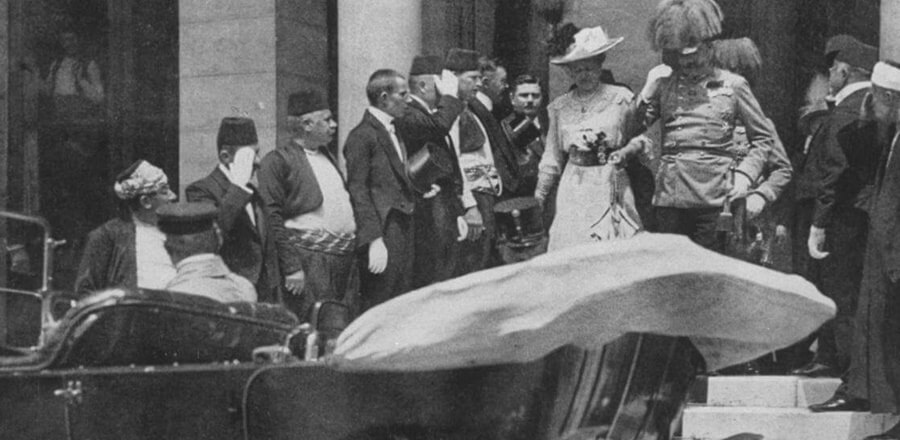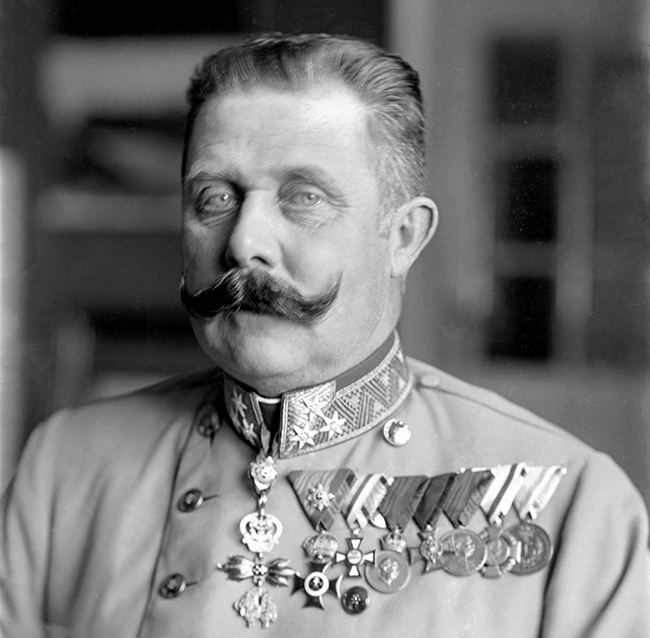

Over the next decade, disputes between Serbia and its neighbors erupted as Serbia moved to build its power and gradually reclaim its 14th-century empire. The new dynasty was more nationalistic, friendlier to Russia and less friendly to Austria-Hungary. The conspirators installed Peter I of the House of Karađorđević as the new king. MacKenzie writes: "The royal corpses were then stripped and brutally sabred." The attackers threw the corpses of King Alexander and Queen Draga out of a palace window, ending any threat that loyalists would mount a counterattack." General Petrović was then killed too (Vojislav Tankosić organized the murders of Queen Draga's brothers Dimitrijević and Tankosić in 1913–1914 figure prominently in the plot to assassinate Franz Ferdinand). The King was shot thirty times the Queen eighteen. The King and Queen opened the door from their hiding place. After a fierce battle in the dark the attackers captured General Laza Petrović, head of the Palace Guard, and forced him to reveal the hiding place of King Alexander I Obrenović and his wife Queen Draga. This changed in May 1903 when Serbian military officers led by Dragutin Dimitrijević stormed the Serbian Royal Palace.

Serbia's monarchs at the time from the royal House of Obrenović that maintained close relations with Austria-Hungary were content to reign within the borders set by the treaty. Under this same treaty, the Great Powers (Austria-Hungary, Britain, France, Germany, Italy, the Ottoman Empire, and Russian Empire) gave official recognition to the Principality of Serbia as a fully sovereign state, which four years later transformed into a kingdom under Prince Milan IV Obrenović who thus became King Milan I Obrenović.

Under the 1878 Treaty of Berlin, Austria-Hungary received the mandate to occupy and administer the Ottoman Vilayet of Bosnia while the Ottoman Empire retained official sovereignty. Postcard for the assassination of Archduke Franz Ferdinand in Sarajevo Much of what is known about the assassinations comes from these two trials and related records.įurther information: History of Serbia, History of Serbia (1804–1918), and Ottoman Empire The other conspirators were arrested and tried before a Serbian kangaroo court on the French-controlled Salonika Front in 1916–1917 on unrelated false charges Serbia executed three of the top military conspirators. Those who were arrested in Bosnia were tried in Sarajevo in October 1914. The assassins, the key members of the clandestine network, and the key Serbian military conspirators who were still alive were arrested, tried, convicted and punished. The assassins were given access to the same clandestine network of safe-houses and agents that Rade Malobabić used for the infiltration of weapons and operatives into Austria-Hungary. Major Tankosić armed the assassins with bombs and pistols and trained them. On top of these Serbian military conspirators was Chief of Serbian Military Intelligence Dragutin Dimitrijević, his righthand man Major Vojislav Tankosić, and Masterspy Rade Malobabić.

Austria-Hungary then declared war, marking the outbreak of the war. The assassination led directly to the First World War when Austria-Hungary subsequently issued an ultimatum against Serbia, which was partially rejected. Serbian military officers stood behind the attack. The assassins' motives were consistent with the movement that later became known as Young Bosnia. The political objective of the assassination was to break off Austria-Hungary's south-Slav provinces so they could be combined into a Greater Serbia or a Yugoslavia. On 28 June 1914, Archduke Franz Ferdinand of Austria, heir presumptive to the Austro-Hungarian throne, and his wife, Sophie, Duchess of Hohenberg, were shot dead in Sarajevo, by Gavrilo Princip, one of a group of six Bosnian Serb assassins coordinated by Danilo Ilić. A plaque commemorating the location of the Sarajevo assassination and steps of Gavrilo Princip (image taken in 1987, before steps were removed in 1992 and plaque changed from Cyrillic to Latin script)Ī plaque commemorating the location of the Sarajevo assassination (image taken in 2009)


 0 kommentar(er)
0 kommentar(er)
